Resources
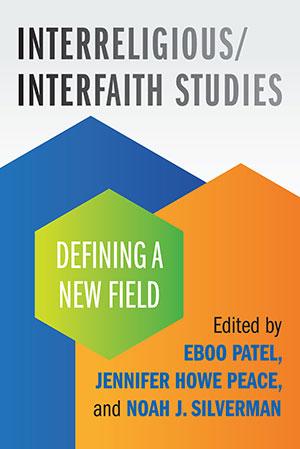
Click Here for Book Review As it is now backed by an impressive number of courses, academic programs and centers, faculty positions, journals and publications, funding, and professional partnerships, there is no longer a question as to whether the interreligious/interfaith field exists. But its meaning and import are still being debated. How is this field distinct from, yet similar to, other fields, such as religious or theological studies? What are its signature pedagogies and methodologies? What are its motivations and key questions? In other words, what is the shape of interfaith and interreligious studies, and what is its distinct contribution? These questions are the driving force behind this anthology. (From the Publisher)
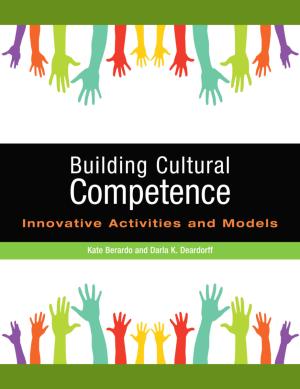
For HR directors, corporate trainers, college administrators, diversity trainers and study abroad educators, this book provides a cutting-edge framework and an innovative collection of ready-to-use tools and activities to help build cultural competence―from the basics of understanding core concepts of culture to the complex work of negotiating identity and resolving cultural differences. Building Cultural Competence presents the latest work in the intercultural field and provides step-by-step instructions for how to effectively work with the new models, frameworks, and exercises for building learners’ cultural competence. Featuring fresh activities and tools from experienced coaches, trainers, and facilitators from around the globe, this collection of over 50 easy-to-use activities and models has been used successfully worldwide in settings that range from Fortune 500 corporations to the World Bank, non-profits, and universities. Learn updates on classic models like the DIE (Description, Interpretation, Evaluation) framework and the U-Curve model of adjustment. Engage in new exercises to help build intercultural competence, using the practical step-by-step guidance on how to effectively facilitate these activities. Stay relevant and have positive impact with clients, organizations, and students with these well-organized, easy-to-implement, and high impact collection of frameworks, models, and activities. The new, research-based models work for developing cultural competence in any environment, and for designing effective cultural competence courses. Education abroad administrators will be able to use these activities in their pre- departure orientations for students going abroad. Corporate human resource professionals will find these activities invaluable in cultural competence building programs. (From the Publisher)
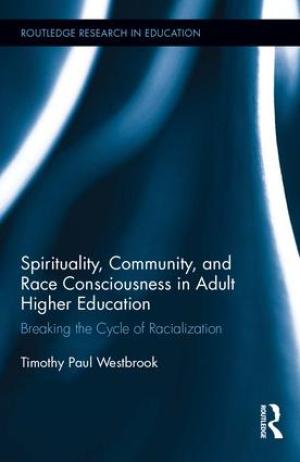
Drawing on the lived experiences of Black students in adult degree completion programs at predominantly White, Christian institutions in the southern United States, this book presents a model for reimagining adult higher education. Westbrook explores the reasons students enrolled in degree programs, how they experience their predominantly white institutions, and how their experiences affect their lives. Employing Critical Race Theory and Christian theology as frameworks for evaluating the students’ experiences, the author sheds light on the ways African American experiences to inform, critique, and shape Christian adult learning in higher education. (From the Publisher)
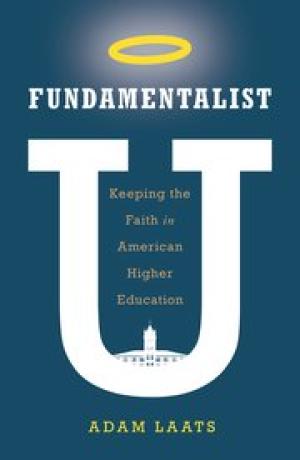
Click Here for Book Review Colleges, universities, and seminaries do more than just transfer knowledge to students. They sell themselves as "experiences" that transform young people in unique ways. The conservative evangelical Protestant network of higher education has been no different. In the twentieth century, when higher education sometimes seemed to focus on sports, science, and social excess, conservative evangelical schools offered a compelling alternative. On their campuses, evangelicals debated what it meant to be a creationist, a Christian, a proper American, all within the bounds of Biblical revelation. Instead of encouraging greater personal freedom and deeper pluralist values, conservative evangelical schools thrived by imposing stricter rules on their students and faculty. In Fundamentalist U, Adam Laats shows that these colleges have always been more than just schools; they have been vital intellectual citadels in America's culture wars. These unique institutions have defined what it has meant to be an evangelical and have reshaped the landscape of American higher education. Students at these schools have been expected to learn what it means to be an educated evangelical in a secularizing society. This book asks new questions about that formative process. How have conservative evangelicals hoped to use higher education to instill a uniquely evangelical identity? How has this identity supported the continuing influence of a dissenting body of knowledge? In what ways has it been tied to cultural notions of proper race relations and proper relations between the sexes? And perhaps most important, how have students responded to schools' attempts to cultivate these vital notions about their selves? (From the Publisher)
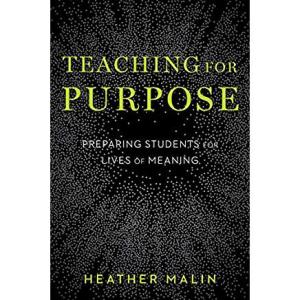
In Teaching for Purpose, Heather Malin explores the idea of purpose as the purpose of education and shows how educators can prepare youth to live intentional, fulfilling lives. The book highlights the important role that purpose—defined as “a future-directed goal that is personally meaningful and aimed at contributing to something larger than the self”—plays in optimal youth development and in motivating students to promote the cognitive and noncognitive skills that teachers want to instill. Based on a decade of research conducted at the Stanford University Center on Adolescence, the book explores how educators and schools can promote purpose through attention to school culture, curriculum, project learning, service learning, and other opportunities. Malin argues for expansive thinking on the direction schools should take, especially in terms of educating students to be creative, innovative, and self-directed critical thinkers. The book includes profiles of six organizations working in schools across the US that have made purpose development a priority. Infused with the engaging voices of purposeful youth, Teaching for Purpose offers a fresh, inspirational guide for educators who are looking for new ways to support students to succeed not only in school, but in life. (From the Publisher)
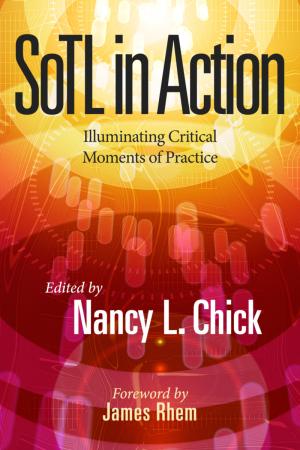
Click Here for Book Review What are the foundational moments of meaningful scholarship of teaching and learning (SoTL) projects? How do teacher-scholars collect, develop, and share useful insights about student learning? How do they work through the pinch points that frustrate, confuse, or elude many SoTL practitioners? By unpacking SoTL processes through rich narratives that illustrate what they look like, this collection offers inspiration to anyone at any stage of engagement with SoTL. This book takes discussions of SoTL to a new level. Its subtitle reflects the microscopic lenses SoTL processes can apply to student learning experiences to understand how they happen, what they look like, what they mean, and what we can do about them. Going beyond definitions, how-to, theory, and debates about methods and standards, the contributors offer a SoTL primer documenting how practitioners have intentionally thought through key moments in their work. These procedural vignettes present powerful examples of what doing SoTL looks like when done well. The authors represent a range of disciplines (the humanities, social sciences, natural sciences, and professions) and a mixture of familiar and unfamiliar names. Nancy Chick has selected contributions that compellingly illuminate why their authors focused on a particular critical moment, the questions they asked as they refined their approaches, and the theoretical and observational tools they employed to conduct their research. Each introduces a specific critical moment in doing SoTL, taking the reader through the author’s reflections, concerns, and choices in doing meaningful SoTL work. The aim is to support potential practitioners, inform educational developers who teach new SoTL practitioners, and inspire experienced SoTL scholars to reflect on their own practice. This is a compelling collection for anyone interested in practitioner reflection, intentional design, and advancing the field of SoTL and the quality of teaching and learning. (From the Publisher)

Click Here for Book Review Even on good days, teaching is a challenging profession. One way to make the job of college instructors easier, however, is to know more about the ways students learn. How Humans Learn aims to do just that by peering behind the curtain and surveying research in fields as diverse as developmental psychology, anthropology, and cognitive neuroscience for insight into the science behind learning. The result is a story that ranges from investigations of the evolutionary record to studies of infants discovering the world for the first time, and from a look into how our brains respond to fear to a reckoning with the importance of gestures and language. Joshua R. Eyler identifies five broad themes running through recent scientific inquiry—curiosity, sociality, emotion, authenticity, and failure—devoting a chapter to each and providing practical takeaways for busy teachers. He also interviews and observes college instructors across the country, placing theoretical insight in dialogue with classroom experience. (From the Publisher)

Advocates for the rights of people with disabilities have worked hard to make universal design in the built environment “just part of what we do.” We no longer see curb cuts, for instance, as accommodations for people with disabilities, but perceive their usefulness every time we ride our bikes or push our strollers through crosswalks. This is also a perfect model for Universal Design for Learning (UDL), a framework grounded in the neuroscience of why, what, and how people learn. Tobin and Behling show that, although it is often associated with students with disabilities, UDL can be profitably broadened toward a larger ease-of-use and general diversity framework. Captioned instructional videos, for example, benefit learners with hearing impairments but also the student who worries about waking her young children at night or those studying on a noisy team bus. Reach Everyone, Teach Everyone is aimed at faculty members, faculty-service staff, disability support providers, student-service staff, campus leaders, and graduate students who want to strengthen the engagement, interaction, and performance of all college students. It includes resources for readers who want to become UDL experts and advocates: real-world case studies, active-learning techniques, UDL coaching skills, micro- and macro-level UDL-adoption guidance, and use-them-now resources. (From the Publisher)
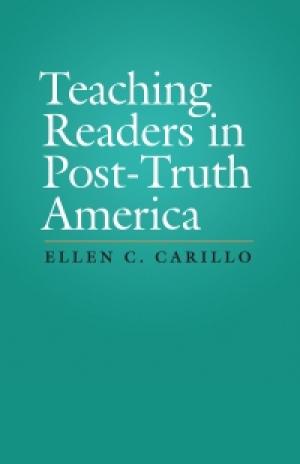
Click Here for Book Review Teaching Readers in Post-Truth America shows how postsecondary teachers can engage with the phenomenon of “post-truth.” Drawing on research from the fields of educational and cognitive psychology, human development, philosophy, and education, Ellen C. Carillo demonstrates that teaching critical reading is a strategic and targeted response to the current climate. Readers in this post-truth culture are under unprecedented pressure to interpret an overwhelming quantity of texts in many forms, including speeches, news articles, position papers, and social media posts. In response, Carillo describes pedagogical interventions designed to help students become more metacognitive about their own reading and, in turn, better equipped to respond to texts in a post-truth culture. Teaching Readers in Post-Truth America is an invaluable source of support for writing instructors striving to prepare their students to resist post-truth rhetoric and participate in an information-rich, divisive democratic society. (From the Publisher)
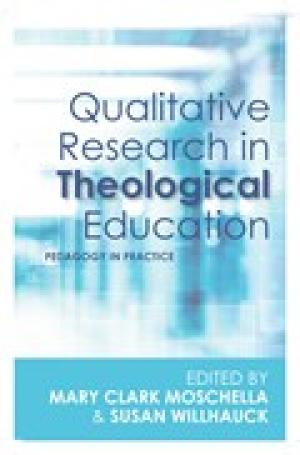
Click Here for Book Review Qualitative Research in Theological Education brings together a diverse group of scholars to consider the theological values arising from and contributing to their use of qualitative research in scholarship and teaching. The book offers a careful consideration of the pedagogical and administrative challenges involved in teaching qualitative research and its various sub-disciplines such as ethnography. As a whole, the book argues that the teaching of QR methods is critical to the theological, ethical, spiritual, and/or pastoral formation of ministers and theological scholars. (From the Publisher)